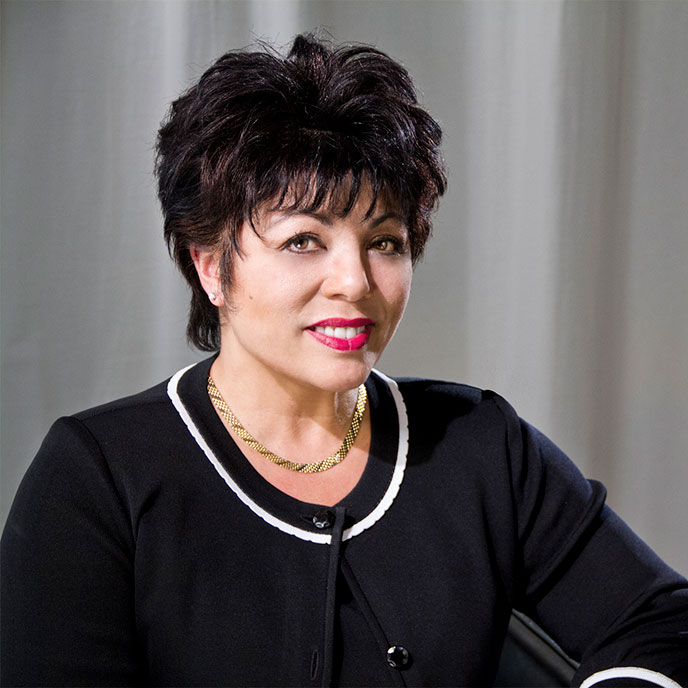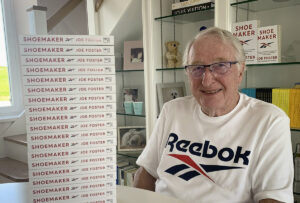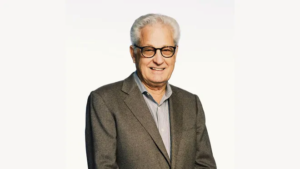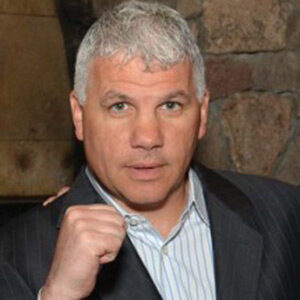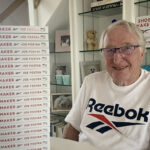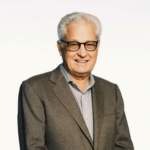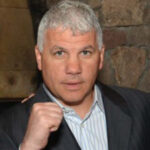View this episode's trailer
Episode Description
Dr. Christina Rahm connects with her good friend, colleague, and wellness expert Dr. Dori Naerbo. Hailing from Norway, Dr. Dori is a consultant for biotech companies specializing in cellular technology and cardiovascular applications. She holds dual positions at the Riordan Medical Institute, specializing in orthopedics, and the Stem Cell Institute as the Director of Post Patient Care.
Host
Dr. Christina Rahm
Guest
Dr. Dori Naerbo
TRANSCRIPT
Dr. Rahm [00:00:00] Today, I have the privilege and honor of not only being with you all, but really also of being able to interview Dr. Dori Naerbo. Dori, I don’t know if I ever say that exactly right.
Dr. Rahm [00:00:16] I hope you guys enjoy this episode of Scientifically Beautiful, which is on the Life’s Tough but You can be TOUGHER network.
Dr. Rahm [00:00:26] This is really exciting because not only do I get to work with Dori, but she is one of my soul mates in life. We met in Norway, she does live in Norway, but was raised in the United States and we became instantly connected and we work on a lot of projects together. She has a master’s degree. She also has a PhD. She is one of the most brilliant scientist and researchers I’ve ever worked with. I’m so excited about this because she is scientifically beautiful, but she’s also beautiful on the inside and outside personally. So welcome, Dr. Dori.
Dr. Naerbo [00:01:04] Thank you so much, Dr. Christina. What a great introduction.
Dr. Rahm [00:01:08] You are literally a beautiful mother, wife, friend, daughter. You’ve been, you know, you have all these wonderful relationships, but you’re also a brilliant clinical researcher and you’ve run companies, you’ve run research, you’re in the stem cell arena, and I want to talk today about all of that, as well as some of the things that we get to do together with international science, Nutrition Society and with some of the formulations that we have worked on with case studies and some of the things that we’re getting ready to work on, actually we are in the middle of working on right now. But I want to start with talking about you personally because this podcast is about the science and how beautiful and different it is all over the world. So, we’re interviewing people in different countries as well as the United States. But it’s also on the Life is Tough network. So being a scientist, going through your education and going through where you are now, you had to go through things, right, to get there. It was a challenge raising children, doing your education, as well as working throughout that. It’s a lot. And so, we’re going to start with just getting to know a little bit about you. I do want you to talk about your education and everything else that you’re involved in right now. But I also want you to go back and talk about what made you who you are and how you got here, and even the adversity you had to go through to get here. I want you to go into just your life and how you got to this education and career, because that’s one of the most beautiful things that I think about you. I actually do know probably more about you than anyone I’ve interviewed on the podcast. So… and we have so many similarities, but if you could just take us back a little bit into how you got here and where you are now, that would be fantastic.
Dr. Naerbo [00:03:30] Well, as you said, I am from California, originally from California. When I got married, my grandmother actually told me that if you want to go to vet school because that was my big dream, I wanted to be a veterinarian. And she says, if you want to go to vet school, I will, you’ll get a full ride. But I decided that I’m going to get married instead, and I’m going to have a family. And I did that. I took that path. But it’s interesting how life is, in how life kind of, you know, it goes here it goes there, it’s never a straight line and you’ll see like when I get to the end of the story. But so yes, I got married. I helped my husband and his family with the family business, created a multi-million-dollar business by the time I was, you know, twenty-five years old. Really didn’t know anything about the business at all, it was just basically I just learned it. I mean, you just had to do whatever you have to do, right? To create the business. And I actually became the controller of the company didn’t know anything about accounting at that time, but I learned how to do it. Didn’t know anything about sales but I learned that, I learned marketing, I learned everything. I learned everything about the business and created this multimillion-dollar business. And then as fate would have it… Well, actually, I decided that, you know what? I’m tired of this. I want to do something for me. I was, you know, like, I live in Norway. But you know, in Norway, when you have a baby here, you get to take almost a year off or 48 weeks with full pay. You don’t get that in the U.S. I mean, I got two weeks off and I had to go back to work. And so, you know, like balancing a career, you know, motherhood. And then… and then there’s no time for education. I remember I tried to go back to school. I was actually going to National University doing the night school, and I remember driving home and falling asleep at the wheel, driving home because I have like a three-month-old baby at home and I just couldn’t do it. I just said, OK, you know what? I’m too tired. I can’t do it. So as a mother, you know, the career pretty much kind of goes on the back burner because you decided to have children. So, for me, that was my first priority. I have to raise the kids. And then when they got a little bit bigger, I started back. I thought, OK, I’m going to go back to school again, to try it again. I thought, what do I really want to do? What do I really? What am I really passionate about? What am I burning for? And I know I like… well, because of certain events that happened when I was much younger, being surrounded, you know, with death and things like that, I became an EMT because I wanted to make sure that if somebody was going to die in front of me, I had the skills to save them. I knew what to do. Like I never wanted to stand there and not know how to do like, for example, CPR, for example, you know, something like that or anything. I wanted to know any kind of lifesaving techniques that I could do. I wanted to know what those were. So, I became an EMT. I was top of my class. And you know…
Dr. Rahm [00:06:36] That’s in the United States Dori? When you…
Dr. Naerbo [00:06:38] Yeah, in the States. Right. So, and I loved it. It was just the most exciting thing I’ve ever done, and I loved working in the ED. I mean, it was so exciting. And, you know, because you get to go out on all those calls and I was, you know, and well, anyways… once, I think we had a patient one time who came in with severe burns and the whole ED was like really tense. It’s like, it’s like listening to a crying baby. You know how when you hear a crying baby, you know how it really, it really starts to get to you, gets under your skin, right? This woman was screaming at the top of her lungs, you know, crying because of the burns. And so, I went to the chief on the ED there and I asked him, I said, do you mind if I just go in and talk to her? He goes, Oh God. He goes like, please do. Please go ahead and talk to her. I said, OK. I went in and talked to her. I got her to calm down. I dimmed the lights down and, you know, started patterning my breath like her, like breathing like she was breathing. And then I started taking her down slower and slower and we started ,and she got… she was very calm. I walked out of the room. And then he said to me, what did you do? He’s just like, Are you like a hypnotist or something? And I thought, Oh my God, that’s a great idea. I should go, I should investigate that. So, I started looking at everything about clinical hypnotherapy. You know how that works, I thought, oh, this because I knew being on the rig and everything that I was doing this naturally, I didn’t even know I was doing it right. It was just a natural thing that I do. And so, I went and got training as a clinical hypnotherapist by Gil Boyan, who ran the American Hypnotist Society back in the day. And so, I actually had my own private practice. I had a huge clientele. It was a great, I mean, like, I was really helping a lot of people, right? And so it wasn’t that I would tell people like, OK, what the issues were. It was for me to guide them to show them, OK, like let them have their aha moment. That was to guide them so that they could see it for themselves, because that’s more powerful, right?
Dr. Rahm [00:08:55] Right. Because you showed them. Yeah.
Dr. Naerbo [00:08:58] Yeah. So, I don’t I mean, I mean I might see it, but I’m not going to tell you, I’m not going to tell you, I’m going to… I’m going to guide you to it, right? So that you can see for yourself because that’s more powerful. And at that time, you know, that wasn’t of course that was not accepted at all. I mean, this is like this… I decided that and I was actually going to nursing school at the same time. But then I realized also because I was an EMT and I was top of my class they wanted me to go to paramedic school, but I couldn’t do it because I had the three kids. I was working full time and Kurt was, you know, my husband he was gone all the time. He was doing his job. So, everything, you know, as a woman, you know, we have to take the back, we always have to take the back seat, right?
Dr. Rahm [00:09:41] Yeah.
Dr. Naerbo [00:09:42] Because the husband has to go and make the money and has to do all this stuff right. Which brings me to a point where I remember I think I told you this, that when I was growing up, I remember I was in second grade and I heard my mom and dad talking in the kitchen, telling… my dad telling my mom, we don’t have to worry about her because, I had four brothers younger than me, I was the oldest. And he said, we don’t have to worry about her because she’ll get married, but we have to focus on the boys. So, I never got any, you know, attention like for school or anything like that. Everything I’ve done, I’ve done on my own. So, which made me a stronger person, I mean, I wouldn’t take that…
Dr. Rahm [00:10:22] Yeah.
Dr. Naerbo [00:10:22] Yeah, I wouldn’t take it away because I, you know, I think of it like, it’s like, you’re like a piece of coal, right? And then when you get that pressure, you become a diamond later, right? Over time, right? And so, what… so then what I decided to do because I couldn’t do the paramedic, I really wanted to do that and I thought, OK, paramedic, P.A., I needed to be in this medical field somehow. And so, then I decided after working in the hospital, I knew there’s no way I’m going to be a nurse. I can’t deal with that. I cannot deal with telemetry. If I can’t work in the emergency room, I don’t want to work anywhere in a hospital. So, I like… I think I’m an adrenaline junkie. So then, so then what I decided to do was, OK, I’m going to go get credibility. I am going to be a doctor. And so, I went… enrolled in… I did an accelerated master’s Ph.D. program at the California Institute of Human Science, and I was sitting there, you know, I wanted to do clinical psychology. I remember when I was in high school and I used to read all the clinical psychology like the Psychology Today was a big thing back then, right? And I thought ah, you know, wouldn’t it be great to be a psychologist? I want to do that. I’m going to do that one day.
Dr. Rahm [00:11:38] Funny. I thought the same thing. I thought that was, I loved Psychology Today.
Dr. Naerbo [00:11:42] I would read all the psychology stuff and it’s so funny too, because like, I would read other things and they’d be so boring to me, but if I pick up a medical journal, anything like that, anything medical, anything, I am like a sponge. I just like, I love that kind of stuff. So, it doesn’t, it could be about anything. But if it’s about science, oh yeah, I’m all over that. So, so then as fate would have it, Kurt and I, you know, we have three kids at the time, we moved, my husband is Norwegian, so we moved from California to Norway and then I thought, wow, this is, this is a big step because like, I couldn’t speak the language, none of my education transferred here whatsoever, so I had to make a decision. OK, what am I going to do? It’s like starting all over again. And so, I decided, you know what? I want to make the most amount of money that I can make because like, why not? Right?
Dr. Rahm [00:12:39] Yeah.
Dr. Naerbo So, I went into IT because I had like a really great IT background and wanted to study…
Dr. Rahm I didn’t know this part about… I knew you were in IT, but I never knew you went to school for IT.
Dr. Naerbo [00:12:52] No, I never went to school for IT, but I’m self-taught, I mean, I built my own computers and I did all this kind of stuff and so, so then I got into like one of the top consulting companies here in Norway. It’s like one of the top three in the world. And so, I worked on some of the largest oil projects. I was the SAP Technologist, did all kinds of different things. And then I actually, of course, I don’t know how it happened, but I got into life science. I was going back to Washington, Philadelphia, I sat on FDA roundtables talking about IT security and things like that. I wrote in the Business Standard for IT security. I mean, now remember this was like 20 years ago, right? And then I was actually, I think I told you this. I, you know, I was actually voted out of 57,000 employees I was one of 17 voted to like, be in this guru… like guru school classification that they gave us, right?
Dr. Rahm [00:14:06] Yeah.
Dr. Naerbo [00:14:06] And so and then they taught us, you know, how to present ourselves, how to be in front of a camera, you know, like Sky News came and we are, you know, doing these interviews and things like that. So. So, after that, my group I was the global knowledge manager of eight countries and then our group got disbanded after 9/11 and then what happened after that and actually because I had to change my education around. I went into Organizational Psychology because I couldn’t finish my degree in the States because we moved here. So, I just decided, OK, I’m going to take all my credits, I’m going to just go and do Organizational Psychology. So, that’s what my Ph.D. is in now and then after our group disbanded, I had three consecutive heart attacks back in 2005. Yeah. And so…
Dr. Rahm [00:15:04] Did you really? Did you know Dori? I’m so sorry. I keep interrupting you. But did you, did you know you weren’t feeling good? Were you prepared in any way?
Dr. Naerbo [00:15:13] Oh no. It was total shock because at my age, I was only 47 back then, and that was, and, but because of my training as an EMT, I knew not to ignore it. I just knew that I didn’t feel right and there was no pain whatsoever in the first one, I had the size of a golf, I felt like there was like a golf ball, like right in my sternum just felt weird. And I remember going up the stairs and thinking, like, OK, before I go to the doctor, I have to put my makeup on. So, remember, I went upstairs putting my face on and I remember coming back down and thinking, gosh, I’m so tired and Kurt just looked at me and he just he looked, I’d never see him look at me so strangely. And he says, you know, he goes like, you really don’t look good, you don’t look well. And so, he’s trying to feed me thinking about, maybe I actually need to eat something, have some coffee or something. In fact, no this is not working. So, I went in and yeah, they told me, like I went to the hospital and they said, like, Yeah, you’ve had a heart attack, and I’m like, what? I was like, shocked. I could not believe it. I mean, like, I felt…
Dr. Rahm [00:16:18] No symptoms, just…
Dr. Naerbo [00:16:20] I had absolutely no symptoms whatsoever. And then and then six weeks later, I had another one, and this time it was presenting just like a typical like a male pattern, like, you know, like the crushing chest pain going down the left side. I could barely walk. It was so bad that I was scared then because like, here, you can’t just go into like an emergency room. You have to first go to a doctor. You have to go to like, yeah, like to a doctor.
Dr. Rahm [00:16:59] So there you can’t just go into an emergency room in Norway. You have to go to a doctor?
Dr. Naerbo [00:17:06] If you live here in Norway, you have to call your what we call our [Norwegian] your primary care physician first. And so that’s what I had to do. I had to call the primary first and then they say, OK, go into this other center and I’m thinking, oh my gosh, I’m only thinking about the golden hour, right? I have my golden hour is like being wasted getting to this other place. So anyway, so I finally get in, I had my testing done again and when I finally got to the E.R., they’re like, why you’re just here like six weeks ago and I had a cath last time and there was no blockage whatsoever, so I was a little bit of a conundrum, right?
Dr. Rahm [00:17:47] Yeah.
Dr. Naerbo [00:17:47] They didn’t know what was wrong and so when I went in this, for the second time, they said, well, you were just here, like there’s I mean, like they couldn’t figure it out. So, they put me in intensive care for two days, like they had this with being watched the whole time and in Norway, you know, when you’re in it, when you’re… when you go down, like usually you’re in a ward of people. So, it’s better to be in the ward because you’re not so serious. But when you start getting in like the two-man room or the one room, you know this is not good. So. So, I remember they kept giving me, I remember thinking when they gave me the morphine, I thought, wow, that’s weird. Like before back in the day, like they used to give you magnesium, right? An IV. But they don’t do that anymore. But now they just, yeah, ok, they’re giving me the morphine. I’m thinking, gee, I’m still having the heart attack, but I just can’t feel it.
Dr. Rahm [00:18:38] Yeah, because they had you on a machine. So, you know you were having a heart attack. Still.
Dr. Naerbo [00:18:43] No, didn’t have me on any machine yet, but I knew, I knew what it was. They knew that that’s what it was because of the way I was presenting. Yes, yes, they were, they were giving me all the testing and stuff like that. But they give you the, they give you the morphine, but you still feel, you still… you don’t feel it right, but you’re still having it.
Dr. Rahm [00:19:02] Yeah.
Dr. Naerbo [00:19:02] So. So, I was thinking like thinking about things like that. I’m also thinking about, oh my god, I haven’t had I haven’t even had a grandchild yet. Like, what’s happening here? Why am I having this? What’s going on? I don’t understand. And so, the doctor had told me later when he came in, he says, well, we don’t know. He says we don’t know why you’re having this. He said you probably just going to go home and probably have another one, but it probably won’t kill you, he said. I’m like, oh my God, I can’t believe you just said that. I was like, All right. OK, so normally I’m very… I’m really strong and very resilient, but when you have something like that happen to you, as you know, you are psychologically open to like these kinds of suggestions, right? And I was really upset about that. I was more upset about that than anything else. And um and then, of course, because it’s a teaching hospital ah, my pressure… Oh, and then they talked me into having another cath, I don’t need to have that because we just we just did that like six weeks ago. There’s no way that I have cholesterol buildup or plaque or something, that is impossible. And of course, the risk going in. And so, when the young doctor comes up to me and he says he, they talked me into it and he and then he says um, I’m going to be the doctor doing your cath today and I said, no you’re not and you know, you don’t… you don’t say that here because they just don’t know how to take you. But I don’t care. I’m going to say what I’m going to say, and you’re not doing it, right? I mean, how many have you done? I asked him, how many have you done? He said, he started like counting and his eyes rolled up in his head, and he started, actually, literally, I could see him counting. And I said, no, it’s not happening today. I’m sorry. You just take me back to my room. If I can’t get the old guy that’s done 10,000, I’m not doing it, period. So, they, so they all they were all skirming around. They went back in there and so they ok move patients around, they got me in and I had it done. And again, nothing. I was perfectly fine. So, then they put me into an MRI study to see what was… see if you know what they could find and they couldn’t find anything. They didn’t know what was wrong. So, this doctor, like I said, he was telling us that like, well, we don’t know what’s wrong with you. You’re probably going to go home and have another one. And I’m like, oh my God, I’m so… and now I’m really scared because like, I have to do something, I have to figure out what’s wrong. So, I immediately became an equals one, right? I became my own clinical research study, my own project. And for years, I would chart, I would do the charting, I thought, OK, what would they do? Well, I mean, like if I was in the hospital, well, they would start doing charting. So, I started charting myself. I charted everything down. I wrote everything down. And you know, what I love to do is find patterns. And I actually found a pattern. I found a pattern. And what happens is that when a woman is in her perimenopausal phase, right? The hormones fluctuate greatly and this is an area where a woman is really at risk for having heart attacks. But at that time, there was no, there wasn’t a lot of research about that. This is actually what led me to stem cells. So, yeah, and so when… and then I had a third heart attack. Kurt and I were walking and there was no cell signal, I remember. So now we don’t… we kind of like, we don’t like walking in that area because we know there’s no cell signal. So, we are kind of… we are afraid of that area. But you know what? He didn’t let me drive for four years. He wouldn’t allow me to drive by myself. I had to always have somebody with me like he had somebody, make sure one of the kids, we were …you know were shadowing me when we would go out and which was yeah, you know, we were scared. Everybody was scared. And so, so anyways, I remember in the kitchen one day I said, wow, isn’t this interesting? I mean, isn’t it interesting how life is, I said. He goes, what do you mean? I said, well, I had to have a heart attack so I can get back into medicine because that’s where I belong. You know, because it forced me back into the medical side of things. And I’ve been there ever since, so I will never stray from that because this is… I know that’s what I’m to do. That’s what I’m supposed to do. Anyway, so after five years, my cardiologist, you know, we did all the scans and everything. He had these big tears in his eyes and I thought, Oh my God, there’s something wrong. He goes, like, he says, whatever you’ve done… He says, just keep on doing it, he says, because you, you’ve cured yourself, he says. I cannot see any evidence that you’ve ever had a heart attack.
Dr. Rahm [00:23:51] Wow Dori.
Dr. Naerbo [00:23:52] So that gave me the green light to complete my book because this whole… between that period that five years I was writing and doing research. And so, my book is… it’s about my story, but it’s also about research and telling women like trying to educate women on what they need to say to get them in a hospital. Because there’s many women that will go in the hospital and they will either get referred to a Gastroenterologist or a Psychiatrist because they don’t know how to present the symptoms in the way that doctors are used to hearing it, right? That’s the bottom line. I mean, that’s the truth. And then, of course, different drugs in different… I talk about the different types of supplements that are really good for your heart health, you know, like L-carnitine de ribose, coenzyme Q10, that’s like the triad for cardiac health. And so, when I completely healed myself, I went into… Well, actually, you know what? It was Kirstin, who at the time was, I think, 12 years old, she goes, Mom, she says she came in and she says, why don’t you, why don’t you look into stem cells? I go, what? I was like stem cells? OK, yeah. Let me, let me look at that. And so, I’m thinking like, Oh, she’s like, my little angel. You know, our children are like our little guides, right? And so that’s what got me, that’s what got me into stem cells was her saying that. I started to research and I’m thinking, oh my God, this this is amazing. So, I worked for a company that did… specialized in stem cells for cardiovascular patients. I have spoken to thousands of cardiovascular patients over the years, and then I was in charge of the clinical research there at that time. At that time, I was going through menopause. And you know, when you go through menopause, you know, you hear those stories about how women like your mind is not, you know, don’t think properly like your brain is in a fog. Well, so what I did to combat that was I I decided I’m going to go back to school and I did a master, Master of Science in clinical research.
Dr. Rahm [00:26:02] That sounds like me Dori because every time I think, well, I’m failing here, I’m not… I think I just need to learn more or I need to get my brain activated? Because with Lyme disease or when I had the brain tumor, same thing. I thought, I’m not going to let this beat me. And even when I would hear, and I don’t know if you went through this, but I would hear story after story which were negative. And of course, I experienced that too but I didn’t want to be that story in the end. So, my, you know, again, I think you and I are very similar. That does not shock me that you did that because you just did…
Dr. Naerbo [00:26:37] That’s what I did. And I was thinking like, OK, I wanted to have that because it’s going to help, you know, with the research that’s needed in the stem cell field because, you know, you really have to have an understanding of, you know, of the patients and in terms of, you know, the type of treatment that they’re getting. But you know what? I think I told you this story. This is really interesting. So, when we talk about, you know, the power of the mind, right, the doctors who called me up like a couple of years later and they said, Dori, we want to know we have a, did you know we have a game that we play when the patients come? I go, no, what game is this? And they said it’s called, “Guess the coordinator” and I go, really? And they go, Yeah, there’s something. There’s something really odd. They said that when your patients, we’ve noticed that there’s something different about your patients. And your patients, actually are better and we don’t know why your patients are better over everyone else’s patients, and we want to know why is that, what is it? So, we can’t, we, they said we can’t even tell. When the patient comes in the first meeting we know, Oh my God, that Doris’s patient, right? Or versus someone else’s patient. And then what really startled them was the results that happened afterwards. You know, three months, six months, nine months, my patients did better compared to the other patients. So, this is why they were calling me to ask me, what is it that you’re doing? Because we know you’re doing something, but we don’t know what it is because of the results. And I said, well, what I do is I actually optimize the patients first before they go for treatment, right? Because if you think about it, if we want to put stem cells into a, well, a hostile environment, they’re not going to do as well as if they were in a pristine environment. At that time, we didn’t have the other products, we only had, we had diet, right? We had the food. Food is the medicine, right? So, we would try to clean them up as much as we could and then send them for treatment. And I know that if a patient would tell me or would seem… anyway seemed like, OK, the patients that would tell me that they somehow have a knowing, like, I know that if I get this, this is what’s going to happen. They’re already, you know, it’s already in their consciousness of what is going to happen. And, just like they thought, is exactly what happened, right?
Dr. Rahm [00:29:00] Because of the power of their mind. And I got to tell you in medicine, science, I… and I know I’ve shared this with you. I’ve been involved with pharmaceutical biotech companies and neutraceutical, they’re going, you know, because you and I are doing case studies and we’re involved in stuff right now. But where the people either from the power of their mind and positive thinking, or people around them that are either meditating or praying or touching and giving them this positive information… I’ve had people before we… that were going to die, before we even put them on a molecule or human monoclonal antibody they were better. And you know, it’s a… it IS a miracle when that happens, but it’s also a miracle related… and we know this, right? We have a hard time admitting this as scientists and doctors. But these things can happen, and a lot of that is because of the energy of positive thinking and the doctors and the scientists that won’t admit that. And that won’t… Well, first of all, it’s hard to deny that that happens, right? We’ve all seen it. But the… I think it’s very hard for traditional individuals to notice it. And when they do know, it’s hard to admit. Does that make sense? So, it’s really interesting. Of course, doctors that go into stem cell, scientists that go into stem cell are progressive. They think, you know, in a different way. And they are not just closed in a box, they think in a very holistic way. They understand energy. But a lot of doctors wouldn’t have even caught that you, as the coordinator, were making this difference because… and I can see that just knowing you, your positive outlook on life is something that I think everyone around you sees. But it’s interesting that in this environment, they caught this with you when you were coordinating the patients for stem cell.
Dr. Naerbo [00:30:49] Yeah. And that was like what that was back in 2005. And some of the patients are still alive today because of those treatments and stuff like that.
Dr. Rahm So, what patients did you guys treat? I’ve never actually asked that?
Dr. Naerbo Well, back then that was only cardiovascular patients that we were working with. And yeah, so that was that was many, many years ago. So now today, you know, stem cell treatments are different now. Back then, we were using, you know, a different type, you know, they were being processed in a different way than they are processed today. But I still think and definitely believe that you have to clean the body first. You have to prepare, you know, for… and also not just from that point, but mentally, right, because you can take two patients have the exact same diagnosis, the same medication, same everything. And one does better and the other doesn’t. You know why? Why is that? Well, you know, one has a positive mental attitude and the other doesn’t, right?
Dr. Rahm [00:31:58] Right.
Dr. Naerbo [00:31:58] One of the things I used to ask the patients that I knew that, OK, this is… this is the end of life. We have a lot of end-of-life talks. And I would ask them, what is it that you regret most in life? And you know what? They would always tell me it was that they regret not being there for their families. Like, that they want to be with their children. Now they want, they can’t, like, they can’t make that up, right? They were too busy, like working and doing all this stuff. And for what? For the money. Even my dad said the same thing, my dad… I was actually my dad’s transplant coordinator back in the day when he had a massive heart attack and then he needed a transplant. At the time, his doctor was too busy, so I stepped in and did that for him. This is actually before… I mean, I don’t know if you remember this, you’re probably, maybe, or I don’t know if you’re old enough. But back in that… during that time, you know, we didn’t even have the… really, we didn’t have the internet then. You had to go to the medical library and do all the research on those old, archaic, you know, with microfiche and stuff like that.
Dr. Rahm [00:33:05] I remember those big manuals that were like yellowish brown. Yeah.
Dr. Naerbo [00:33:12] And so that’s what.. that’s what…
Dr. Rahm [00:33:13] I love those, by the way, because I always like to look at everything. So, and when I first started using those, I remember I could sit there for hours. But anyway, so you went and…
Dr. Naerbo [00:33:22] Yeah, I did that. I went down to La Hoya University and then I had to… Was it La Hoya? Was that where I was at? Yeah. When I was down there, down in San Diego and did all that, did all the research and stuff like that, got my dad in to Scripps? Now what was… No, it wasn’t Scripps. It was Sharp, Sharp Medical. And he was patient No. 26.
Dr. Rahm [00:33:48] Wow.
Dr. Dori Naerbo [00:33:49] And yeah, I so I did all the patient coordination for him and everything. And then even his cardiologist said, oh, thank you so much for doing that. You know, I know I’m supposed to be doing it, but I’m just too busy. But you got it. Yeah, I took care of everything. But you know, that’s just typical like, you know, that’s just me being an EMT, right?
Dr. Rahm [00:34:07] Yeah. Well, it’s you being you.
Dr. Naerbo [00:34:09] Yeah. Okay. Yeah. So, but one of the things my dad did, and just to tell you… just to go back to the point of the power of your mind, right? My dad was one of the top engineers for NASA, right? So, he likes the numbers, right? All about the numbers. And so, he asked the doctor, doctor what do you think? How long do you think I have to live with this, with this new heart? Because you know, Joe, he says, like, it’s probably like five years or something like that. I’m like, I said, Dad, why did you do that? Why did you ask that question? Because like, you know, and you know what happened? Like, he was doing fine. In fact, he was doing so good. They were just, like, really surprised how good, how well he was doing, right? No rejection, no problems or anything like that. But guess what? Guess what happened in five years?
Dr. Rahm He died?
Dr. Naerbo Oh yeah. Yeah, big time. I mean, like they said that all of his cholesterol numbers were doubling and tripling every day. They gave him like 23 different types of medication, antibiotics, whatever they had at that time to throw at him. Nothing was working. Nothing, they couldn’t figure it out. He literally became his own self-fulfilling prophecy. So, the power of your mind is so… I mean, we know now today there’s more science that proves it. Yeah, right?
Dr. Rahm [00:35:30] We do. But I hate when you have this prognosis like you know, I’ve dealt with a lot in research and in cancer in my career, and we did these investigator sponsored trials and the patients would ask… and I’ve been a principal investigator, I’ve also been a study coordinator. I’m sure you have too. And they would ask those kinds of questions. And I would say there’s not enough research and data about you in this personal situation to give you that answer. And my answer to you is you’re not a typical case study, you’re your own, right? We don’t have an answer, and I know I don’t like… I understand people always want this prognosis, but I think it’s actually negative to give it because I’ve seen patients’ stories… Well, my father, you know, with head, neck and throat advanced cancer, which as you probably know this, you usually don’t live very long and Daddy has been alive for years, you know? But if you would listen, you know what, the prognosis was like thirty-six months. I think it’s been six, seven years and a lot of that… I’m like, you, you’ve got to clean the environment and then you’ve got a supplement, which is, I really feel like you and I, you know, I think the viewers of this are people on a journey like us for wellness and health. But we are, you know, we jumped in together making sure that we could continue to help people. And I didn’t completely understand when… I didn’t understand when I met you exactly who you were. I just knew I wanted to work with you, and I knew you were this brilliant scientist researcher, but I really didn’t know all the things you had done in stem cell, or IT, or science. And so, it’s very interesting to hear your story. I believe, personally, it’s your energy. And I know that sounds odd. It’s not just your mind, it’s not just your drive, that’s your energy, which is helping the patients that are in the stem cell research projects or STEM Cell Institute, because I think you guys are doing that in Panama, right? Different places in the world, the stem cells.
Dr. Naerbo [00:37:32] We… so we do stem cell treatments in Panama. We also… we do some orthopedic work in Texas.
Dr. Rahm [00:37:43] And you’re the main person, right? Coordinating that or one of the main people coordinate…
Dr. Naerbo [00:37:49] Coordination side for the Texas side. But on the Panama side then, I’m in charge of the research and things like that.
Dr. Rahm [00:38:02] And you’re doing everything from autism to orthopedic correct or am I wrong?
Dr. Naerbo [00:38:08] Yeah, that’s true. We do, we do all to all types of treatments there.
Dr. Rahm [00:38:12] And do you believe like your father or with you, this kind of treatment would have helped if you would have had this back there? Or do you think that it was more of a genetic issue and the reason I’m asking… or environmental issue or a combination of both, and I just had this conversation with Dr. Tina, you know, about how doctors put things in this box. But yeah…
Dr. Naerbo [00:38:36] I don’t. I never believed that mine is a genetic issue or that his was a genetic issue. I believe that it was a lifestyle issue for him because of the high stress that he was under, his lifestyle choices that he made in terms of his diet and things like that, because this is like one of the most reversible things that could happen is the heart problem, right? In my case, you know, I tied this to the periods and things like that. I remember one of the gynecologists she told me, oh, she goes, well, we can fix that. We’ll just give you an IUD. I said, I’m not having an IUD. I said forget it. She goes like, well, you’ve had a baby. It’s OK. You could. You can handle it. I said, no, I don’t want that. So, I opted out of that. But so, and I did not have I don’t have any cholesterol issue. I don’t have any of the classic symptoms, but I was having these attacks. But they don’t… They still didn’t know why, but I do believe that it was because of that. And the reason I know, because I found the pattern in terms of being able to see that during those times when I was most at risk, was during my period was either on or before that time period is always that time period.
Dr. Rahm [00:40:06] So most people wouldn’t have even caught that if they were doctors or scientists. Do you know what I mean, Dori? Because you do have to look at patterns. And I think for some reason, we just accept diagnosis as what it is and don’t try to figure it out. But I think…
Dr. Naerbo [00:40:16] Yeah, no, I don’t accept anything. I have to figure it out. I have to know the reason why, we have to get to the root cause. This is the… this is the whole issue, right? Cure the cause, right? So, we have to get to the root cause to figure out… because everything else is just a Band-Aid, like, you know, when you take your medications and I’m not saying, don’t take your medications, you know, if you need to take your medications, you take your medications. But like before I got involved with this project, I mean, I had no idea about heavy metals or anything. I didn’t even… I thought… all I remember about heavy metals was OK. I knew there was mercury in the thermometer. And I remember as a kid, don’t eat the paint because, you know, there’s lead in the paint, you know, that kind of stuff. But I mean, it’s been an eye-opening education of just how polluted we are, which kind of makes a lot of sense now, why? Why patients do… some patients do better, you know, and some don’t. In a lot of different things because of the toxicity load that they have in their bodies.
Dr. Rahm [00:41:20] Well, I have a question. So, you work with some pretty notorious doctors and we don’t have to mention their names unless you want to, that are in that area. Do they… Because I don’t blame… a lot of PhDs, MDs or scientists really completely understand the toxicity in the environment as well as in people, even though the World Health Organization, the CDC, all these different governments acknowledge it, right? And they know that environmental factors have impacted the increase of autoimmune disorders and cancer, fertility, and everything from ADHD, any kind of cognitive functioning disorder. They admit that, right, it’s open. That’s in all kinds of reports, like if you look at government reports on this, it’s acknowledged. And what I can’t figure out is even though we understand that that’s one of the things that causes the increase and can even activate an increase or change in a virus or bacteria or fungus because it just makes it grow, right, or change. I don’t think that they’re still educating on it, and I’m not sure why. But in my… not until I got to Harvard did I really hear a lot about it. Before I got there, I was already on this journey of really talking about detox. I do think in the pharmaceutical biotech, we touch upon it, right? Because whenever you go into those companies, if you’re in the medical or clinical science field, they train you and you go into their labs. And so, but I don’t think that they spend a lot of time because instead, it’s like you said they want to put a Band-Aid on it or just give you something until you clean it out. It’s not really there. And one of the things you’ve done, you’ve developed these case studies, you… even our testimony with your own life, and I do want you to share a little bit about that. I personally think your entire life is a testimony to what you can be and who you should be. Because we’re each very different and unique and you have taken the gifts you’ve been given and you’re just at the starting point of even doing more, but you’ve really done so much with your life. I do want to hear from you a little bit about how important you think it is to get rid of bad things in your life, including, and you and I talk about this, emotionally, mentally.
Dr. Naerbo [00:43:38] What kind of bad things are you talking about?
Dr. Rahm [00:43:41] Well, we’ve both been through some tough times. Dori and I have shared… this is different because we’re talking on a podcast or it’s such close friends that we both have not had the easiest lives and we’ve had to go through things. But, you know, I think it’s a daily, almost a daily struggle to decide, am I going to take a step to get rid of bad things and surround myself with good things? You know, one of my things, I think that was one of the first steps is to do it inside your body and then try to continuously do it in your life, knowing that there’s never a perfect relationship, there’s never a perfect friendship, or anything between a mother and a child, or husband and wife, or any of that. But I do think all of that plays in to patients, and if they get better and how they react to medications or supplements or nutraceuticals, I want to hear your viewpoint on that because you have a unique approach, kind of like me, you’ve got the psychology counseling background, then you’ve got the science background. So, I do, and I just threw a lot at you. I do. I do want you to touch upon some of that stuff.
Dr. Naerbo [00:44:55] Yes. So where shall I begin with that?
Dr. Rahm [00:45:00] Well, you could share with us because I would love to hear, even though we work together and we work on formulas and we work on clinical research projects and case studies. I would like to hear a little bit about your personal journey and getting rid of toxins in your body and then supplementing it. And then also before we get off the podcast, want to hear about where you see your future? But I’d love for you to share. You don’t have to share anything personal if you don’t want to. But just where you see how important it is to get rid of the toxins and bad things in our life, in our body, and in our outside life, and then to put good things. And because I… I even know, Dori, like our circle of trust and our tight circle, I think improves my health, for example, I know that sounds odd, but I do. I think it… having close friends and the people around you actually make your life better and then impact your health as well. So, I’d love to hear your viewpoint because you’re… the audience that’s on this journey with us does not get a lot of opportunity to talk to a scientist in stem cells that’s also in counseling and understands the whole scope of everything. So, I’d love for you to just get a viewpoint on all of that.
Dr. Naerbo [00:46:15] Well, one thing I think before I actually started on the products, I remember thinking, so this is what it feels like to slow down. Like you kind of like start to forget things a little, not forget things, but just like you, just not like you were when you were 30. You know what I mean? Like, well you don’t know what I mean because you’re not there yet… Cause you’re much younger.
Dr. Rahm [00:46:43] That’s not true! I’m in my early 50s. I feel I… But I wish I’d been detoxing and getting rid of bad toxins in my body because, you know, I’ve had lung disease, I’ve had a brain tumor, a spinal tumor. I’ve worked on that for years. It’s a continuous battle, and I think it’s something I’ll always have to do because it’s all around us, right? I don’t… you know, this is not your age anyway. Your cell age, you know, is very different than your actual age. You know that. And a lot of people don’t know that. I brought it up on one of the podcasts. I think with Zsuzsa or [inaudible]. Just saying that you’re in the age of the cell is actually different than the actual age, but you did share that with me one time you said before you started with a clean slate and some of the different products you… you felt like you were slowing down, which I can’t even imagine that, to be honest.
Dr. Naerbo [00:47:33] I know it was really it was like, oh my gosh, is this like, OK, what am I going to do now? You know, I felt like I yeah, I felt that kind of like a slowdown. And then when I started the products, I remember thinking, my gosh, I literally feel like I’m 30 again. Like, it was amazing. And to have that, you know, clarity of mind that like the function and just like being able to like, OK, now I’m going to do this, I’m going to do that, while my husband is sitting there thinking about retirement, I’m like retirement? No way, that’s a… that’s a… that’s a… that’s like a dirty word to me. Like, I never want to hear that word. It’s never going to happen for me. I’m going to work. I’m going to work until I die.
Dr. Rahm [00:48:14] We will be working in a nursing home together, or we may be working…
Dr. Dori Naerbo [00:48:17] We may be running it. We’re not going to be in it. We’re going to be running it. No, no, no, no, no.
Dr. Rahm [00:48:26] We’ll retire at one of our wellness clinics that were…
Dr. Naerbo [00:48:29] Exactly, exactly. So, we’re not… we’re far, we’re far from that. So, we still have a lot of learning to do. And I think for me, the products had just been amazing. I mean, it’s well, as you know, it’s helped my family tremendously because like, say, for example, the birth of our little Mason, right? Yeah, that was that was so frightening. I remember I think I called you, I was upset. I was… I was in tears.
Dr. Rahm [00:48:56] I stopped. I don’t know if I shared this that day. I had all these people in the office. I had Scott Pohlman, who runs, you know, I think, commercial banking for SunTrust. I mean, I had Ted Baker, I had at the time because he wasn’t over here, you know, he was in that route. And I just had all these people. They had brought in outside consultants. But I literally stopped when you called me about Mason and I said, OK, this is it. I need to mentally, emotionally focus on Mason coming out perfect, right? And being this beautiful baby. And I think you and I share a unique perspective of understanding energetically how… I mean nanotechnologies to understand this energy can change anything. Right? So, we did focus on it. But now I’d love for you to share the story with the audience because I think they would love to hear it.
Dr. Naerbo [00:49:46] Yes, so with Mason… Well, Kirsten, my daughter, had gone into labor. This had been like what, three days by the third day… I mean, she still hadn’t delivered, her water broke and like three days later, she’s like, still in labor. And she was exhausted, you know, so they gave her some… what did they give her? They gave her a sleeping pill and I remember that I’m like, why do they give you that? Like, what are they doing? And so, then they gave her a sleeping pill. Then they… I mean, I really believe her case was mismanaged, you know? Well, yeah, very much so. And so, so basically, they induced her. They gave her, they give her pit as well, like two rounds of pit. They gave her three rounds of epidurals they gave her… they even gave her morphine too. When the sleeping pill didn’t work, she was on morphine, and I remember she called me up the next day. After that, I’m like, I couldn’t even talk to her. She was like, so out of it, and she was just like, falling asleep talking to me. And of course, I can’t go down there because, you know, covid time, right? So, I remember… So, when I called you, she was like, when the labor finally started going and she was finally dilating, she was stuck like at eight for like two hours. I’m like, OK, my gosh, you’re in transition. You shouldn’t be two hours. You should be like, Let’s go, let’s you know, why isn’t it progressing? And apparently he was, he was in the wrong position, which they didn’t know about. I don’t understand how they did not know this, but he was like his head was kind of, you know, cockeyed in there. And so, when they finally… that’s when I called you and we just like, we were all working on him and… energetically we were all working on him. When they put him on her chest he was like a limp rag and I’m thinking, oh my gosh, and they took him away, they whisked him away, and I said, OK, I need to know his Apgar score, you know, one minute, five minutes, you know, in 10 minutes. What? What is it? Give me the numbers right away. And then when I saw him, he had an ng tube. I’m like, what’s happened now? Oh, he’s in the NICU now? And I go, why? Oh, his respiratory rate is low, his heart rate is low. It’s like in the 30s or something like that. And so, they wanted her not to breastfeed. They wanted her to not give… not to breastfeed, for her to give her milk to someone else and that they were going to feed him. I said, no. I said, you go down there and you wake yourself up every three hours and you go down there and you feed him your milk. I mean, that’s milk for him, your golden milk. I said, it goes to him, right? And I said, you need to, you know, like, OK, well, probably this depression is because of all the drugs that you were on that, you know, is being processed, right? And then he has to process it too, because it’s whatever you have, he has. So that’s when I said, OK, you know, I went down and brought her bottles, a clean slate, and she took a bottle like every day, like she did, like a bottle, like she did, like a quarter bottle. Every… was it every six hours? Yeah, she was doing that. Well, she actually… she did like, yeah, quarter of the bottle.
Dr. Rahm [00:53:00] Because most people don’t.
Dr. Naerbo [00:53:02] We don’t recommend this for other people, but for our family, that’s so different. It’s different for your family. But for other people, we’re not saying that. We’re not, just so you know, we need a disclaimer. We’re not recommending this for other people.
Dr. Rahm [00:53:17] Red flag, Dori. I remember you calling me and asking me, how much should I give her? And I said, well, you know, people start with one drop. They go up to 10 drops. There you go. I know that. I know that it’s…
Dr. Naerbo [00:53:30] That we both knew that we should give her, that she needed a whole bottle, but we just didn’t know how to give it to her.
Dr. Rahm [00:53:36] And I hate to say this, but if it were my child and I could… if she would listen to me because I have a 15-year-old, she doesn’t always listen to me right now. So, I said I would… this is what I would do if it were me or you. And I knew that if, if that would happen, not that it’s a miracle at all. It’s giving them something to get the toxins out. And when you give people pain meds, I don’t know if you know this story. Zeolites and orthocylic acids and even vitamin C, vitamin D, zinc, all that has been used in history to help people actually detox in alcohol rehabilitation centers. So, if you’ve been on all this pain med and all these things have gone into your body radiation, there’s just, you know, different things. You’ve got to get it out. You really do, because otherwise it’s there and it just stays there. And I would not have told anyone at that hadn’t been you… like I even believe that if that had been my own sister, that wasn’t a scientist, I probably wouldn’t have told her that because it just… I just knew that you understood. And I just knew that was what she needed. And I also wanted the baby to do the breast milk, as you know.
Dr. Dori Naerbo [00:54:42] Yeah, exactly. We needed it. Yeah. So, he turned around within 24 hours and they couldn’t believe it, right? They took the tube out. I said, you know, like, he doesn’t need the tube like… so… and I said, ask her, ask him what the respiration rate is. And she says… and so then it’s so funny because she texted me that respiration and I said, how did you get it so fast? She goes, like, I read it off the machine, OK, give my med anyway. So.. what’s that?
Dr. Rahm [00:55:13] Because she helped you with research and she’s…
Dr. Naerbo [00:55:16] Yeah, yeah, she’s very clever. Very smart. So anyways, yeah, it really, I honestly believe that that saved him and saved him from, you know, any possible cognitive damage. I really believe that. And he did. He rebounded so fast from it and from that whole episode. And, you know, this is traumatic, I told her, I said, this is a traumatic experience for him being stuck like that for all that time, you know, because like he was like she was saying, like, why he’s like, why is he crying like this? Or, you know, because like, it’s his trauma. I said, just keep on taking the stuff and give him comfort, you know, and he’s amazing. He’s so strong. Even the doctors were commenting on how strong he was. We do have some root babies, too. Yeah. Yes, we do. In fact, I know of another case where one particular person, she was getting gestational diabetes and was coming in for a regular testing for that. And that’s when they actually started the clean slate. I think she was probably about five months along at that time, and they started the clean slate around that time.
Dr. Rahm [00:56:29] Well, can we say we haven’t told the audience this, so I’ll take the time to tell them this. That’s one of the projects Dori and I are on. I worked on some formulas. Dori also is the main, really main, scientist that leads the case studies for the company. We also have International Science Nutrition Society that does it. But Dori does the Tuesdays with Dori, where she does talk about the case studies, and she does talk about some of the results as natural products. But because of those natural products, we’re also in these other projects we’re working on together in different countries trying to help people get rid of the things that we don’t need in the body and supplement, which seems very simple, but it’s… it can… it’s life altering, and that’s why you know, you have all… if you look back through history, Dori, at the scientists and doctors, that really made a difference, they did understand that. Like you hear them say, like all of them will say, like nutrition is the key to life. Do you know how…
Dr. Naerbo [00:57:26] Yeah exactly.
Dr. Rahm [00:57:27] Eat to live or live to eat? Right?
Dr. Naerbo [00:57:30] Right.
Dr. Rahm [00:57:31] And so supplements like I hear all the time, so say you were in the pharmaceutical industry and nutraceutical. What’s the difference? And my comment is they’re both needed, right? Like, you have to have a wide scope of things in your toolbox. If you’re really going to treat the human body or animals right, you’ve got to make sure you have these things. But giving your body a clean slate not to use that word too much about your body. I know a clean… like you brush your teeth every day, but to clean it inside, you’ve got to do it. And, Dory, you know, when I started on this journey to do this, I was attacked because people do not want us to come out with these products that could really help people. And I don’t really understand why, because you know that we both aren’t like anti pharmaceutical or anti other companies. We just wanted to bring just simple products out that are supplements to help people. But I think any time you make a change, you have to make a stance. And you were, of course, one of the first people that I thought of when the Life is Tough but You can Be Tougher series came out with Scientifically Beautiful because you were such a support for me, and a lot of that is because you’ve been through a lot and you were able to identify with me and I was able to completely identify with you. But I want to take the time to tell you now that we’re on this podcast, to let you know that you’re one of the reasons I was able to step up and be me because I was apologizing. And as you know, over and over. Maybe I’m not good enough here or maybe my indications are not good enough here. And then you’re like, Christina, you just be you and if people don’t like you, then have them move away. And one of the things that I keep going back to as I’m doing this podcast, it takes this circle, right, this tight knit group—and I mentioned it earlier—of support, and sometimes that support isn’t naturally a child that you have or a significant other. Not that they’re not important, but they have their own, you know, things they’re working on. And you are one of the things that came into my life that was like, oh my gosh, this is my person. Like, this is one of the people in my life that’s there forever because she understands me and accepts me for who I am, and it’s hard to be different. It’s tough to be in a situation where you feel alone because you understand and you, you don’t know this, but you made me feel less alone.
Dr. Naerbo [01:00:05] Aw thank you and I feel the same about you, too. And I think that as we develop our tribe, that’s what we do. We’re developing our little tribe and things like that. You know, the thing is, is that people just don’t… I mean… To me, we have such a mission in what we’re doing. And in an education platform that we have to get the message out to the world because we are living in such a toxic environment. I mean, like I said, I really had no idea until I started doing all this research and looking at like, Oh my gosh, you know, every week it’s something new, right? Yeah. And then we know that transgenerational toxicity is occurring, you know, from your grandparents, you know, to your mother all the way down to you. And then it’s just getting worse and worse because like the soil is polluted because, you know, back in the day when they had… when they used to use lead in the in the in the cars, right? That just was spewing [toxins in] the atmosphere. People don’t even think about things like this. They don’t think about like… we are like… I was just telling somebody the other day, I said, we are actually the parasite of the world. Like the waste in the consumption that we do, right? Things that we just… we just discard things and we’re just polluting everything. And then not only are we polluting the environment, we’re polluting our bodies as well of all the toxins and stuff like that. I mean, I don’t know how many chemicals I have on my face right now, but you know, I have to go and detox that off, my lipstick, right? Yeah. Full of chemicals. I think I did a talk on that and stuff like that. But, you know, because of the toxicity that we have, we need to like… we need to help people understand that. I think that’s really important because when they understand that, they’re going to understand something else and that has to do with their innate immune system, right? Your immune system can’t work right. Your gut can’t work right. Nothing can work right until this stuff gets, you know, you want to have tight junctions, you want to have all these things because for you to support your immune system, that’s really critical right now, especially in light of what’s going on. And so, this is an education process that, you know, we as mothers, we as women need to help other women understand that because the women are the ones that are the caregivers in the families, right? They’re the ones that we need to be reaching out to, to help them understand why they need these products and how… and not just the products too, but also nutrition. I mean, we did Cornell University together, right? So, and one of the things too which I thought was really interesting, I don’t know if you caught this, but in one of the lectures I remember, I thought, oh, this is interesting. Then they talked about heavy metals.
Dr. Rahm [01:03:01] Oh, yeah, no, I got a little bit in Cornell, I told Harvard it did address it. And that in the pharmaceutical actually classes too, it was addressed. So, but Dori, those are your top schools. Do you know that? I think that are just starting to address it. You know what I mean?
Dr. Naerbo [01:03:19] Yeah, no. But I was I was surprised. I was surprised that I was hearing and thinking, oh, wow, this is this is really good, right? That they…
Dr. Rahm [01:03:25] Actually said heavy metals. You know what they did?
Dr. Naerbo [01:03:28] It did. And I have… I kept it. I took a screenshot of it. Aha! Heavy metals. Let’s… let’s talk about that. But then when I started talking about, oh, I did, I did. So, we know, like when I did my paper, they didn’t like it because I started talking about it. Yeah, no, no. I got, yeah, they kind of… they weren’t too happy with it. So I’m thinking, OK, wow. Well, you mentioned it. So I thought I would just kind of elaborate on it. Yeah, yeah. But it’s OK. At least it’s starting to, you know, come into light now because, you know, we have to look at the kind of food that we’re eating, the plants, the, you know, the animals and all this kind of stuff that it’s in our food, it’s in the air we breathe. It’s in the water, it’s in the soil, it’s everywhere. Yeah. And babies now are being born with like, what? I think there was like 251 chemicals already in the cord blood. The kind that cracks me up. So, every time I hear patients who will tell me, oh, I want, I want cord blood, I’m thinking, hmmm, no, no, you don’t want cord blood, you don’t want that; full of chemicals, full of heavy metals and stuff like that. This is no good. So now I think this is definitely, you know, a huge undertaking that we have to do. And then of course, we have the other projects as well.
Dr. Rahm [01:04:45] Yeah, yeah. Well, I know that we don’t have a lot of time, but I want to say this towards the end. I want you to give the viewers, the audience, three things that got you here, even through all the adversity, through moving to Norway, not speaking the language, through having children, having to restart school and then going to school again, even marriage with a career and kids, it’s hard. It’s a lot, right? And I know that you’ve been like me. You’ve been at companies where they criticized or had a hard time with you because you were a female and it was different or you were a working mother. I want you to give people three to five things that got you here and what was important. So, people can understand how to be tougher because one of the purposes of this is not just to share science and medicine and clinical, but to share personal stories and how we can help the viewers really in their own lives as well.
Dr. Naerbo [01:05:42] Oh wow. How you can be tougher. You know, every time something happens in my life or I have some type of adversity that happens, I always think of the silver lining. Maybe I don’t realize what that is right now, but I know it will happen. I know one day I will realize what that is. So, any time anything happens, I think that I have this big crown on my head. It’s full of emeralds, and every time something bad happens, I just bling I got another emerald. So, I have like lots of emeralds on my crown that I wear. And then I just like, think when any time this is like, okay, like recently, as you know, I got two emeralds, two big ones. Yeah. So, I just think of it… I think of adversity, like in in that way, and not thinking of things that are… like, not so much happening to you, right? Or at you. It’s the way you perceive it, right? So, you know, then I think, OK, like sometimes with somebody like, OK, somebody gets angry or somebody, yeah, does something. I’m thinking like, OK, well. That is like, this is not my issue, right? So, you have to think about like, OK, this is not your issue. That’s your issue, and you have to push back and you have to like, there’s an energy about that, right? Yeah. So, it’s like, if I’m in a bad mood, everybody around me is going to be in a bad mood. So, but if I’m in a good mood, everybody else, everybody feels that; everybody feels the energy, right? It’s like, we’re yeah. See, it’s the same thing. It’s like, you know, this book I was in graduate school and this… I read this book. This book really kind of like, you know, they ask you, like, what book really had an impact on you? And one of them was St John of the Cross the Mount to Carmel. This was written by a Catholic mystic, was really interesting, and he said something like, he came up with these things like birds of a feather flock together, right? So, this is the energy that people feel. Like, say, for example, you can have two drug addicts in a room. They don’t even know each other, but they will seek each other out. They’re like magnets, right? Because there’s an energy. So, we have like… we talk about the senses that we have. We have another sense. This an energetic sense. And sometimes we connect with people and we think, oh my God, wait, like, oh, this person is so incredible, we have such connection and stuff like that. And it could be like, oh my god, I didn’t know. We didn’t know this person… these two did drugs, right? But they connected this way, right? But anyway, so you… like that energy that comes into you, right? You just have to like for me, I just, you know, I push that back, right? Like, I just like I visually see, OK, push, push, push, push, push out. It’s not my energy, it’s not, it’s not for me.
Dr. Rahm [01:08:53] We talk about putting mirrors all around and this is what we do. I’m like, if I put this, someone trying to hurt me, they can deal with that. But I’m going to be protected in here and I’m going to see what my heart and my mind is seeing and let them see what they’re seeing. Because I, I think some people actually enjoy being in a bad mood or enjoy conflict. And I don’t, and so I’m like you Dori.
Dr. Naerbo [01:09:19] You don’t act like, you know, on Facebook. That’s why I don’t engage. Like, you know what? I used to think this, that if you don’t engage like, like some people think that when you’re having a conversation that you always need to put your two cents in right, you always need to be like, you need to be contributing.
Dr. Rahm To respond. Yeah.
Dr. Naerbo Yeah, no, no, no. No, no, no, you don’t. You don’t need to. So, some people think like, they think that you need… that this is some type of contribution, right? That you’re engaging, you’re contributing and things like that. No, that’s not what you’re doing. And so, I remember one time I was doing that same thing like I was… I thought, I was thinking, oh, I’m contributing, I’m saying what I’m thinking, and you’re giving all these solutions and stuff, and I’m contributing. And then I remembered the management that we had at the time. I said, I said to her, why aren’t you contributing? And she said, Because I know when to cut the… how did she say it… I’m so bad at these sayings… Is it the wheat from the shaft?
Dr. Rahm [01:10:31] Yeah, I think that’s how you say it, to sift the wheat from the chaff.
Dr. Naerbo [01:10:37] I think it’s called the wheat from the chaff. My husband tells me, don’t say those things because I always screw it up. But anyway, so it’s a point that, yeah, you have to know and I go, what is… I said, well, what does that mean? She said you have to know when to engage, right? You don’t need to engage in every little thing. It’s like an energy sucker. I call them energy vampires now.
Dr. Rahm [01:10:57] Now, my father told me one time, he always said it’s better to listen, which is true, but it’s also a better comment. But he just said some things don’t deserve a comment or a response was my point. Yeah, and it’s true. And so, like lately and I’m so bad at that, and I think that’s the psychologist in me wanting to contribute, wanting to respond. But lately, it’s not even worth arguing. I mean, like, I had someone and I shared this with you on Facebook that I’ve never met, but I was asking questions about the products that I made, and they said something very negative to me and very negative about me. And I responded with a very quick sentence, and then they responded again, and then I talked to you and I thought, You know what? There’s no response. I don’t even know this person, and it’s not worth it. So I think one of the most important things about life is, you’re right, it can be tough. And to get through things, you have to learn to just block it out and just not…
Dr. Naerbo [01:11:53] You have to think about it less that, you know, life is short is so short. You… we don’t know. It changes in a minute and we don’t know… we have to be present. We can’t be always thinking about like, oh, you know, this, you know, like the next day, the next day that, yeah, that’s great and everything the future and stuff like that. But we have to live in the moment, like make every minute count because I can tell you and as you know, because you’ve… we’ve had life threatening issues, right? I remember very clearly that when I had my heart attack that I was thinking like, oh my God, like, you know how life wasn’t the same anymore? It’s like you take a back seat. It’s like you’re in a movie. I felt like I was at a movie and life was just going by me and I couldn’t get in. I couldn’t. I couldn’t break through. I couldn’t get in life again. And it took a long time. It took a while for me to break through that because you come to a point where you’re so down and depressed. I never even knew what depression was like until I had that happen. I had no idea what that’s all… And I remember thinking, wow, this is, so this is what depression is like. I even told my doctor, I said, Listen, I said, I’m depressed, I can feel it. And she says… You know what she said to me? She says, you don’t look depressed. I go, what? what kind of… You are a medical doctor, I’m telling you, I am. I am clinically depressed like… But because I didn’t look like I was, I couldn’t have been, right? I’m like, Oh my God. So, when they try to give you the SSRI, of course you know me, I have to look at all the side effects and I’m thinking, oh, forget it, I’m not taking this. Forget it, I’m going to stamp myself out of it. And you know what I did? I did diversion techniques. I love diversion techniques. I would take a rubber band and I used to do this all the time with my clinical hypnotherapy patients. You think about something bad; you don’t think about it. Your brain doesn’t like pain, right? So, I took a rubber band and I snap myself. Every time I think about that bad thing, I would just snap myself and pretty soon, you know what happens? You stop thinking about it because your brain doesn’t want to think about it because it doesn’t like pain.
Dr. Rahm [01:13:53] Because it hurts. And it’s actually hard to think about negative things. So, I think those are extremely good tools that people need to learn, and they hopefully will learn from you because of this podcast.
Dr. Rahm [01:14:06] This is Scientifically Beautiful, my podcast, and we are on the Life’s Tough, You Can Be Tougher network. I hope you enjoyed like I did talking to Dr. Dori Naerbo and her wonderful story and beautiful story around science and her personal life. Thank you for being on this journey with us. I look forward to seeing you guys next time. See you soon.

